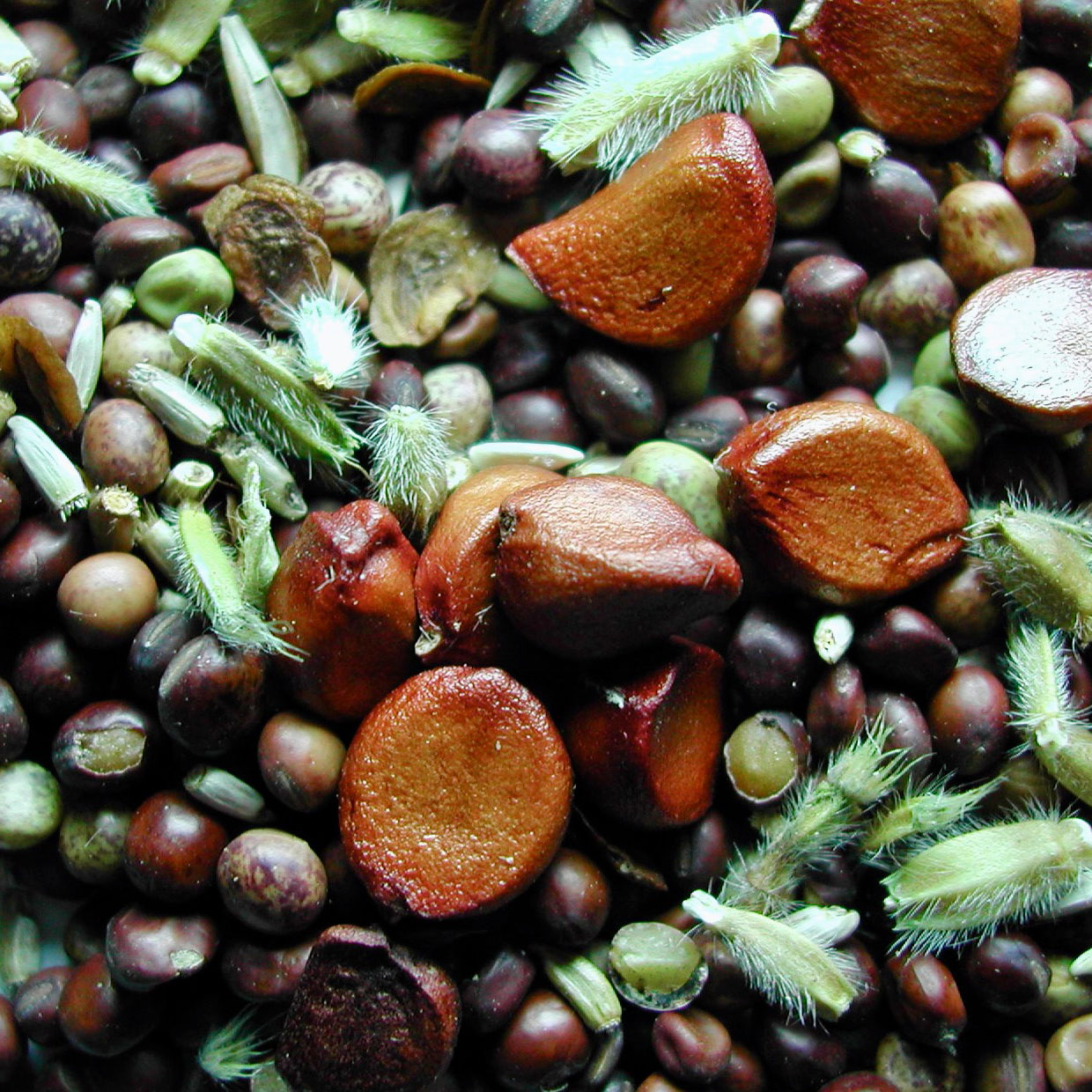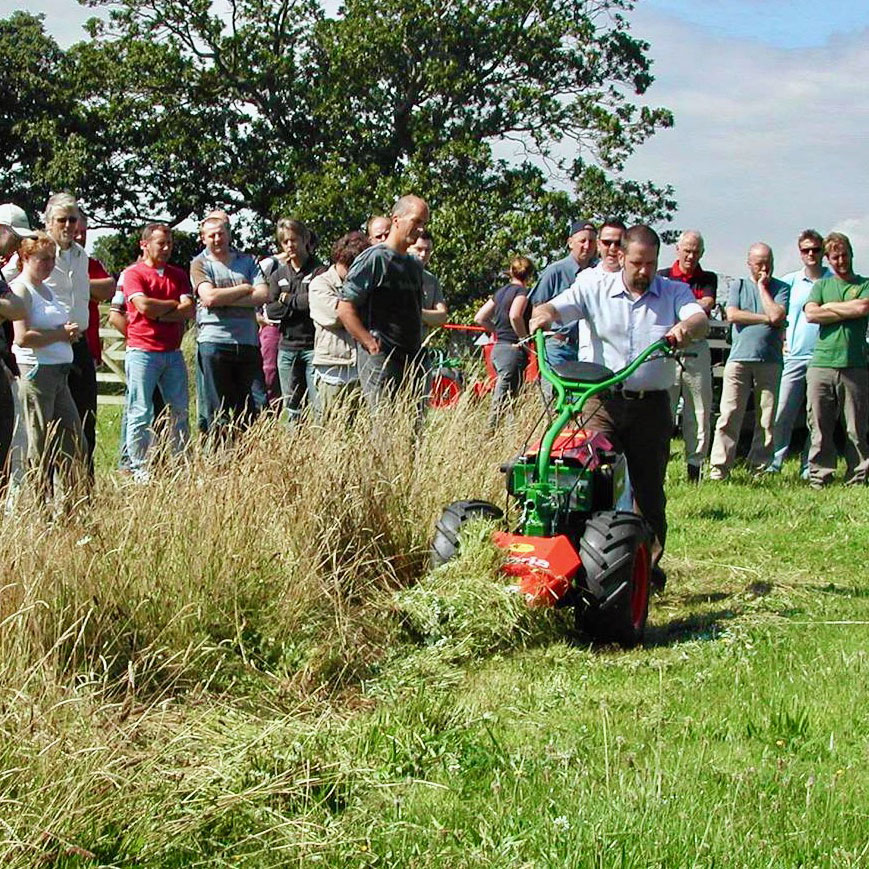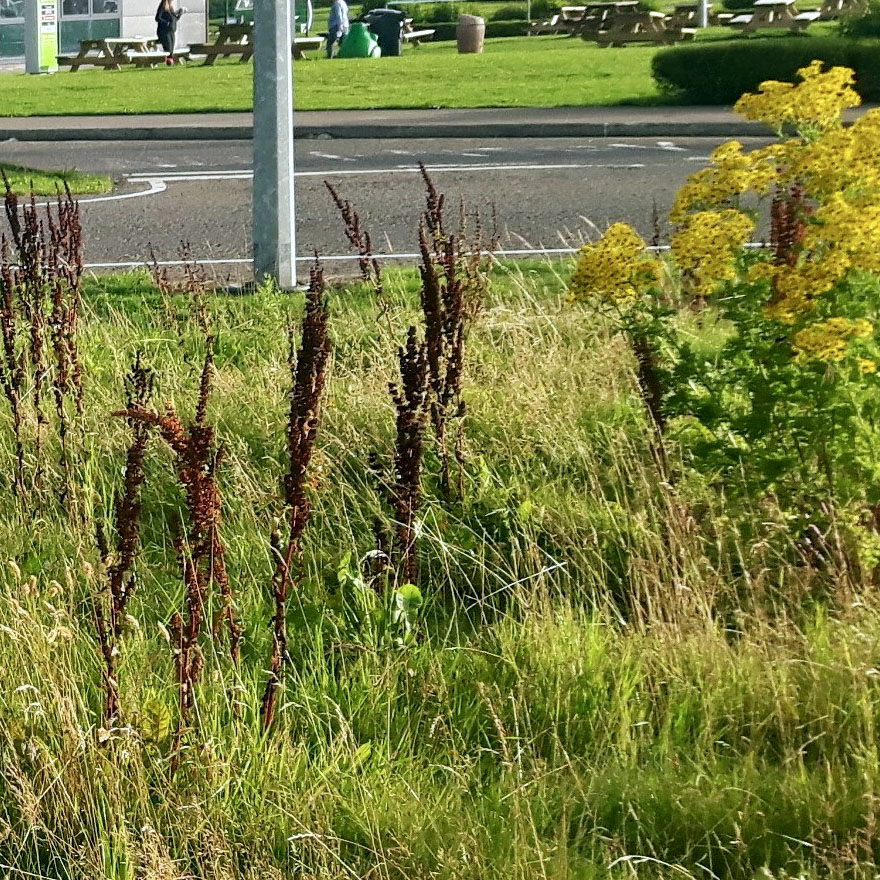+44 28 4488 1227 Office Open Mon-Fri 9am-1pm
Skip to content“How can I create a wildflower meadow for pollinators?”
This is EcoSeeds’ most frequently asked question.
If we want to ensure our pollinators are there when we need them, providing enough food (flowers) is key.
Planting a native wildflower meadow can help, but creating a sustainable, pollinator friendly meadow is more complex than most people realise.
That is why the experts at EcoSeeds have collaborated with the Pollinator Plan to help produce this How-to-Guide. It will help you plan for and carry out your wildflower project.
Who is this guide for?
This How-to-Guide is aimed at Councils, local community groups, gardeners or businesses that want to create a wildflower meadow.
What is a wildflower meadow?
A wildflower meadow is many things to many people. To some, a wildflower meadow is a brightly coloured field made up of annual species such as poppies and cornflowers (left photo). These were the “weeds” of cereals such as barley. With selective herbicides and improved seed cleaning practices these species have declined.
Other people have in mind the traditional Irish hay meadow (right photo). In the last 50 years the practice of hay making has declined dramatically and has been replaced with cutting for silage. In Ireland this has led to pollinator declines because silage fields have very little “food” (flowers) when compared to hay meadows.
Traditional hay meadows are very good for pollinators, but because they contain more grass and subtle, perennial flowers, they are less colourful than annual mixes.
Even though it’s less colourful, planting a perennial wildflower meadow is more cost effective and a much better source of food for pollinators than continually planting annuals.

Annual mix
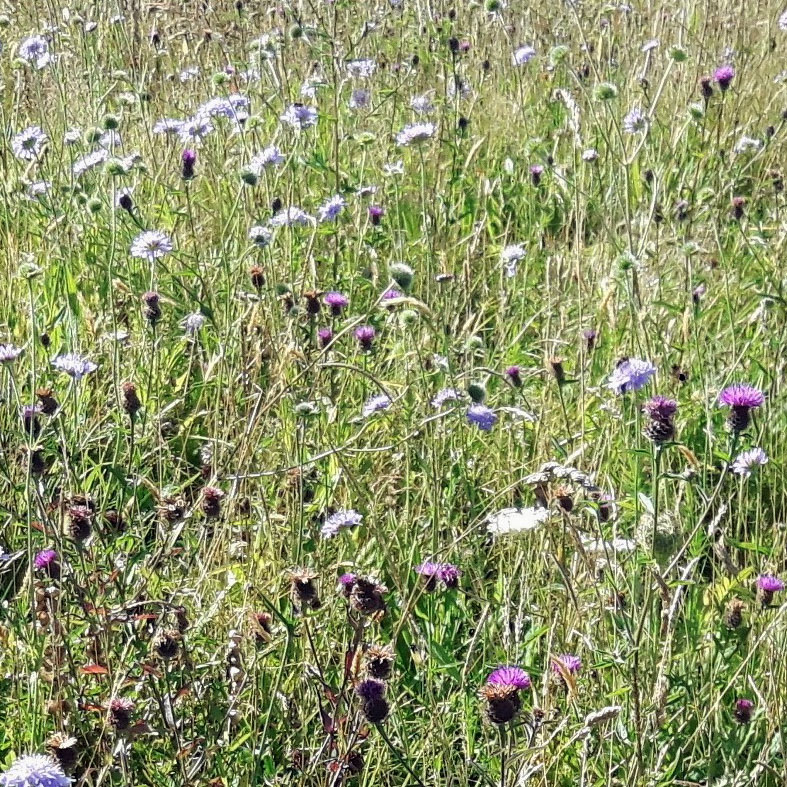
Perennial mix
Key points for creating wildflower meadows
1 Where your wildflower seed comes from matters!
If you decide to plant a wildflower meadow using commercially bought seed, it is very important to use ONLY native species collected and grown on the island of Ireland. http://www.native-seed.eu
2 Make sure sowing wildflower seed is appropriate for your site
If your site already has good pollinator friendly plant species, sowing wildflower seed will be costly and unnecessary. Instead, enhance your natural wildflower meadow through reduced mowing, and consider plug planting of additional species. If your site has only amenity grasses and few other flowers, then consider sowing a native commercial wildflower seed mix.
3 For the best results, plan carefully and properly prepare your site
Wildflower seed can be costly, so it’s important to properly prepare your site before sowing seed. You also want to be sure the seed you buy is appropriate for your site.
4 The job isn’t done once the seed is planted….be prepared to manage your meadow
All wildflower meadows need management in the years after sowing. This usually involves cutting the area once a year and removing the cuttings. This requires specialised equipment so be sure to consider management details before purchasing seed mixes.
5 Don’t forget to provide flowers in spring time!
Planting a wildflower meadow will mostly provide food for pollinators in the summer time. But making sure flowers are blooming in spring is still critical. To ensure pollinators have food before your wildflower meadow blooms, plant early species such as Red campion, Primrose, etc.
Wildflower Seeds DO:
- Buy local provenance, native wildflower seed – from members of the European Native Seed Producers Association (ENSPA) http://www.native-seed.eu
- First consider creating a natural wildflower meadow instead of sowing.
- Mow once in autumn & remove cuttings to reduce soil fertility & allow wildflowers to grow naturally
- Check to make sure your seed mix is actually pollinator friendly
Wildflower Seeds DON’T:
- Purchase non-native seed from supermarkets, garden centres or online
- Sow commercial seed on an existing species-rich grassland
- NEVER plant invasive species
Important considerations for planning your wildflower meadow
Before diving into your wildflower project, there are a couple of key points to consider.
First, what site will you use?
Second, what type of wildflower meadow do you want to create, and what management will it require in the future?
Asking these questions early in your project is key to creating a sustainable, pollinator friendly wildflower meadow. It will also save you from wasting money, resources and time!
A. Choosing a site
When choosing a site for your wildflower meadow, it is important to make sure you don’t destroy existing valuable pollinator habitat.
Make sure your site isn’t already species-rich before sowing any commercial wildflower seed. Try using a good wildflower/grass guide to identify what species are already present on the site.
If it is already rich in flowers and is visited by insects you should consider management options rather than sowing:
Manage the area with a cutting/grazing regime designed to increase wildflower diversity
Consider planting wildflower plugs and/or adding yellow rattle (see www.ecoseeds.co.uk) to increase the site’s value for pollinators. For more information on growing wildflower plugs to enhance meadows see our How-to-Guide on collecting and using pollinator friendly wildflower seed.
If your site has only amenity/agricultural grass and a few other common flowering species, then consider sowing a native wildflower seed mix.
Once you’ve identified your site, you should consult with your seed supplier for advice. This is particularly important if it is a large site so that you do not waste money. In selecting the correct seed mix, it is important to consider your soil type and whether the site is wet or dry and sunny or shady.
Knowing your site’s management history is also helpful. For example, if a site has not been cut for years it may have large seed bank. This will make it more difficult to establish wildflowers as they will have to compete with more vigorous species such as docks etc. In that case it would be especially important to ensure good site preparation to remove weeds and weed seeds before sowing.
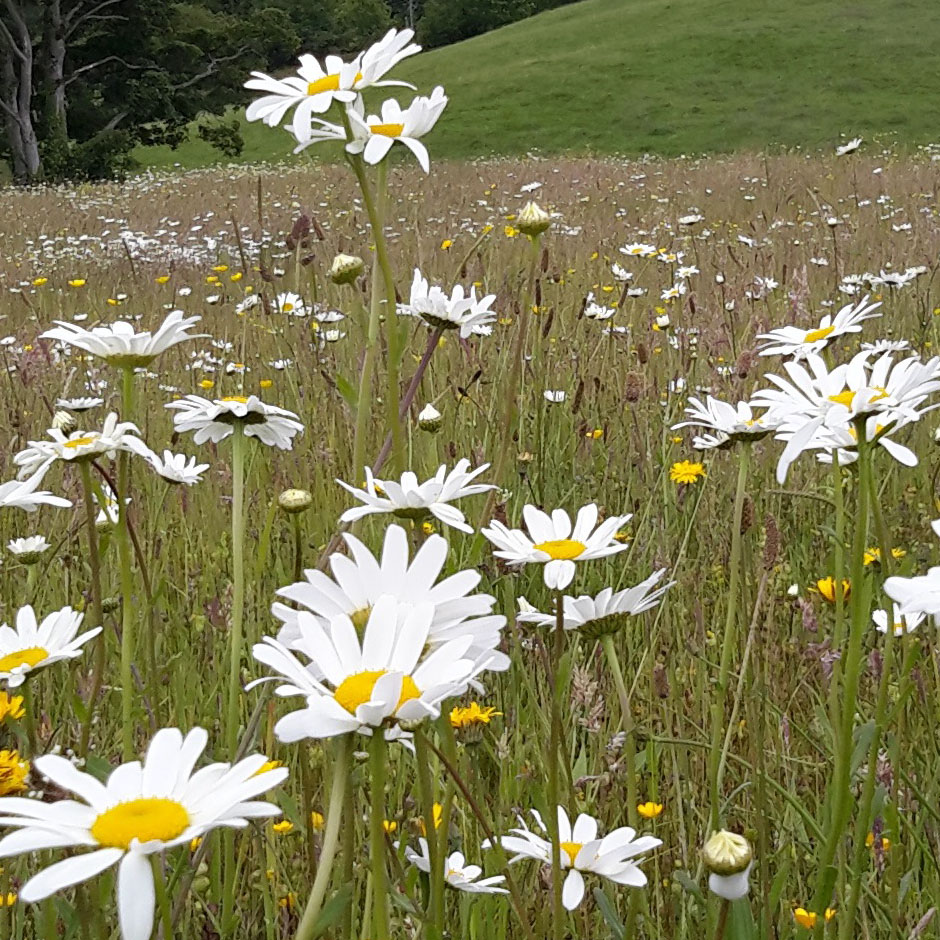
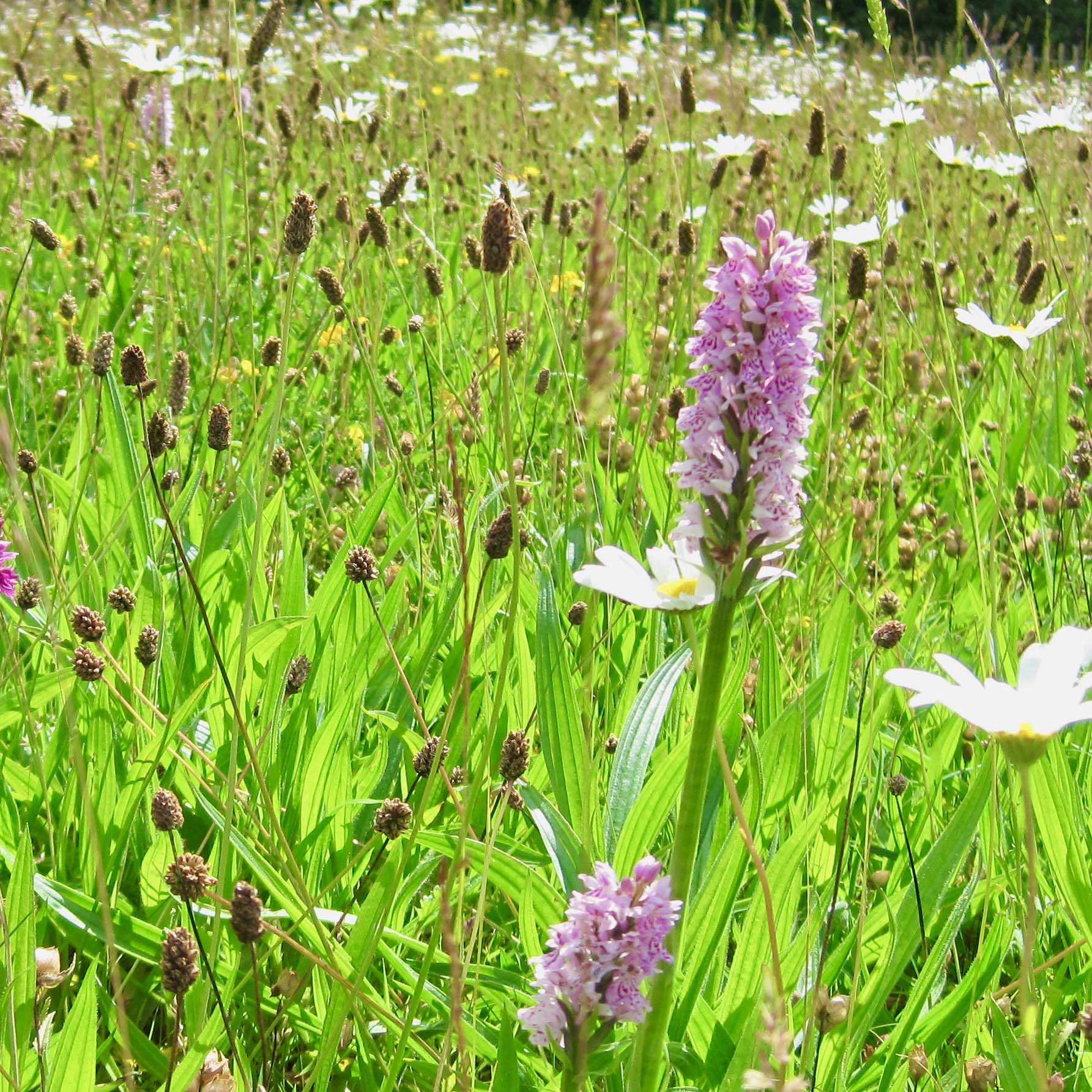
Species-rich grasslands - inappropriate sites for sowing commercial wildflower seed
B. Seed selection
Choosing a seed mix that matches your site is very important. Some plant species can survive across a wide range of conditions and so are common to many seed mixtures (e.g. Selfheal), whereas others will only grow in certain soils.
REMEMBER: Always be sure that commercial wildflower seed mixes are comprised of native species collected and grown on the island of Ireland. (http://www.native-seed.eu)
There are three main types of seed mixes: annuals, perennials, and annual/perennial mixtures.
See the tables and pictures below for a further description of each type. Use this information to help choose the best type of mix for your wildflower project.
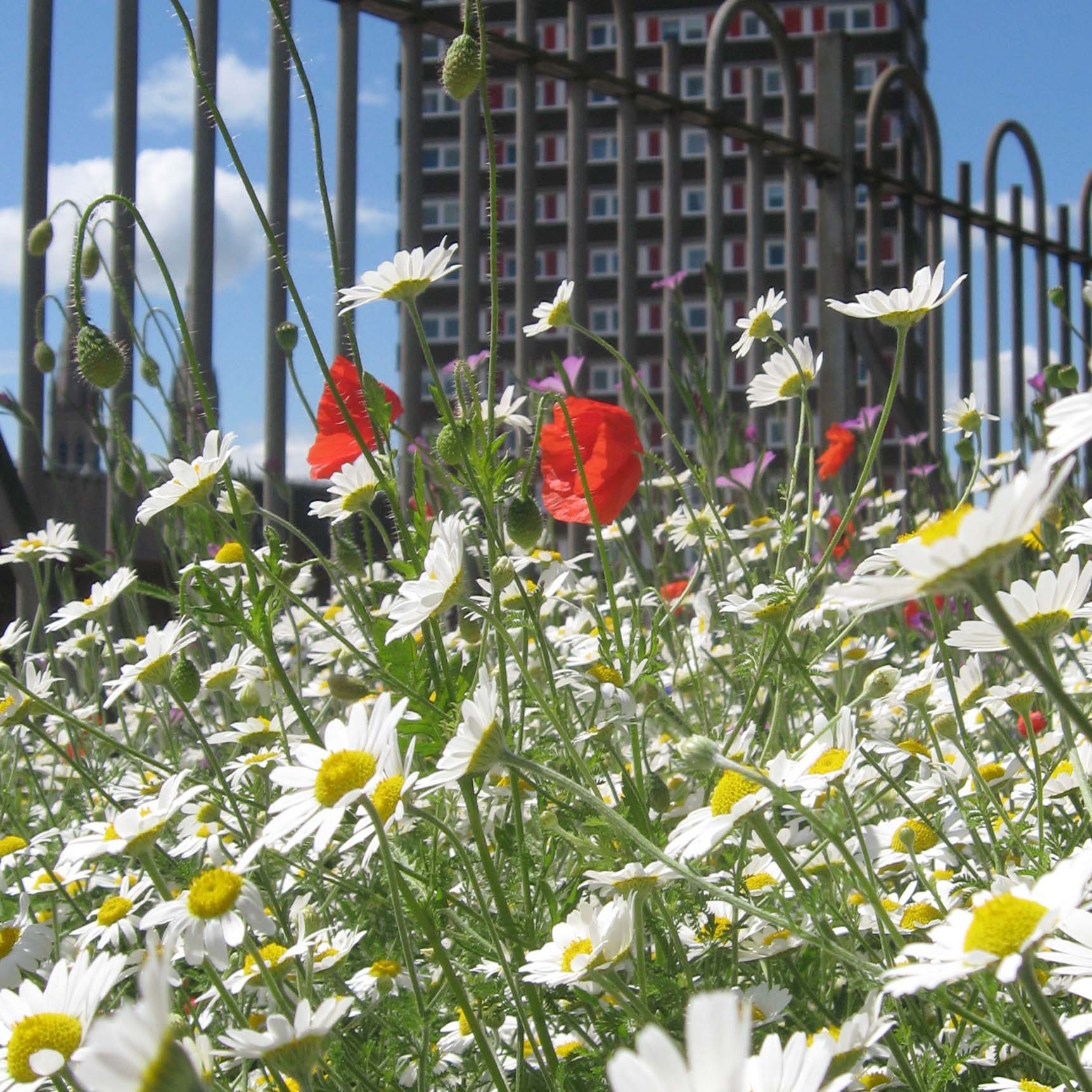
Annual mix
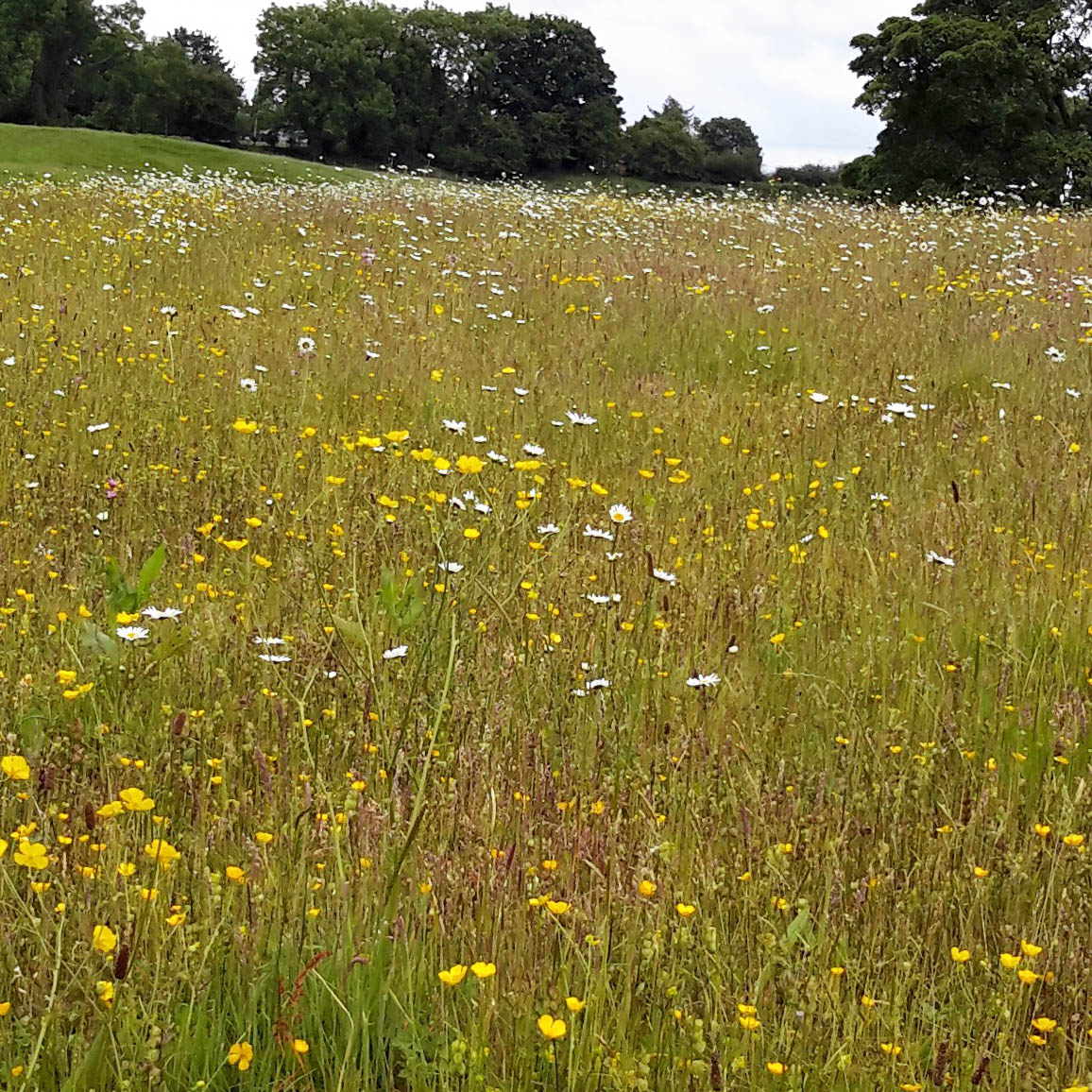
Perennial mix
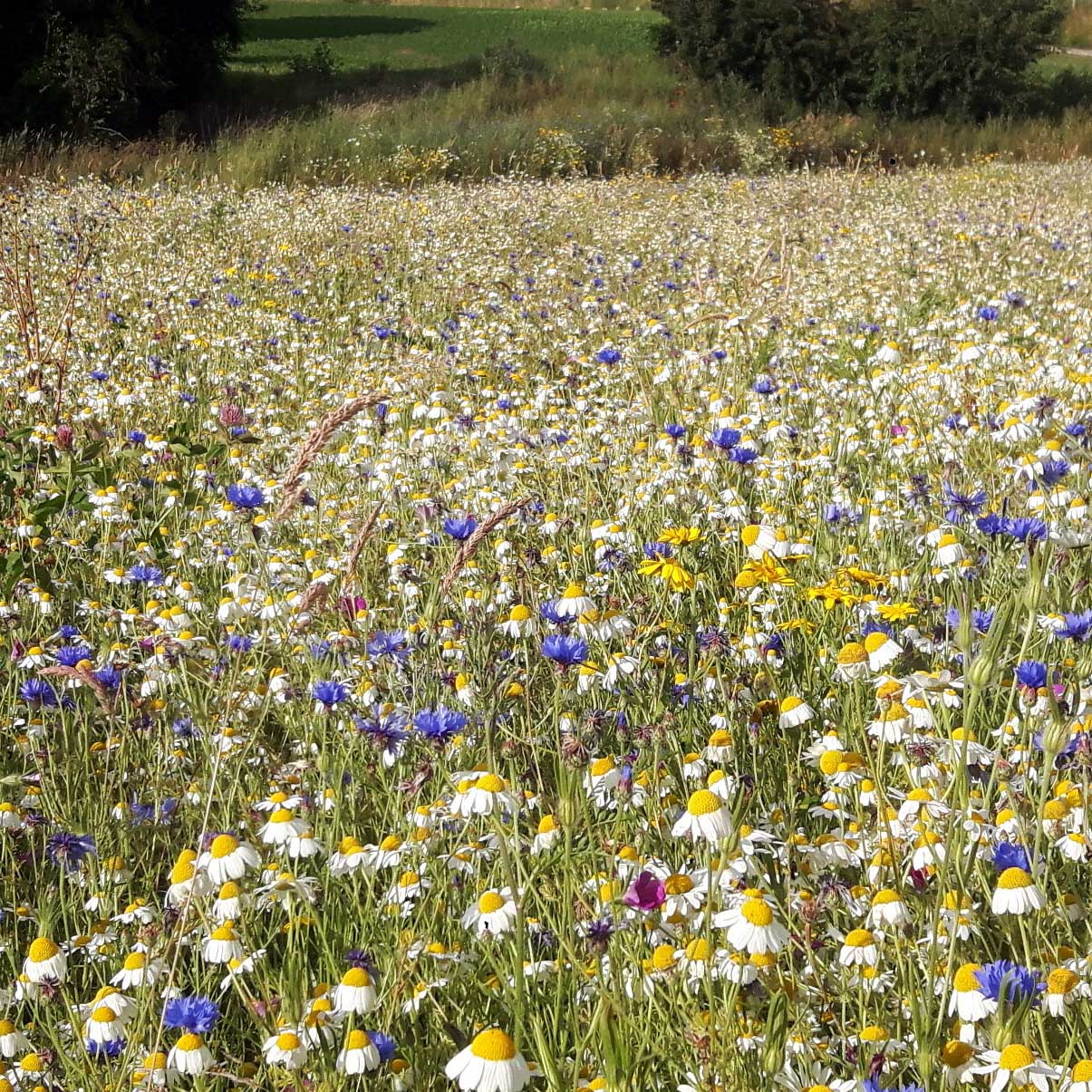
Annual & Perennial mix
What is so special about Yellow Rattle?
Yellow rattle (Rhinanthus minor) often occurs naturally in older wildflower meadows.
This plant parasitises the roots of a wide range of meadow plants, particularly grasses.
Yellow rattle can be added after a wildflower meadow has established, to help keep down grasses and encourage other wildflowers.
Yellow rattle is an annual species. There must be grasses present in order to sow it. Local provenance Yellow Rattle seed will perform best. EcoSeeds can supply seed from Counties Cork, Kildare, and Dublin, and from Northern Ireland.
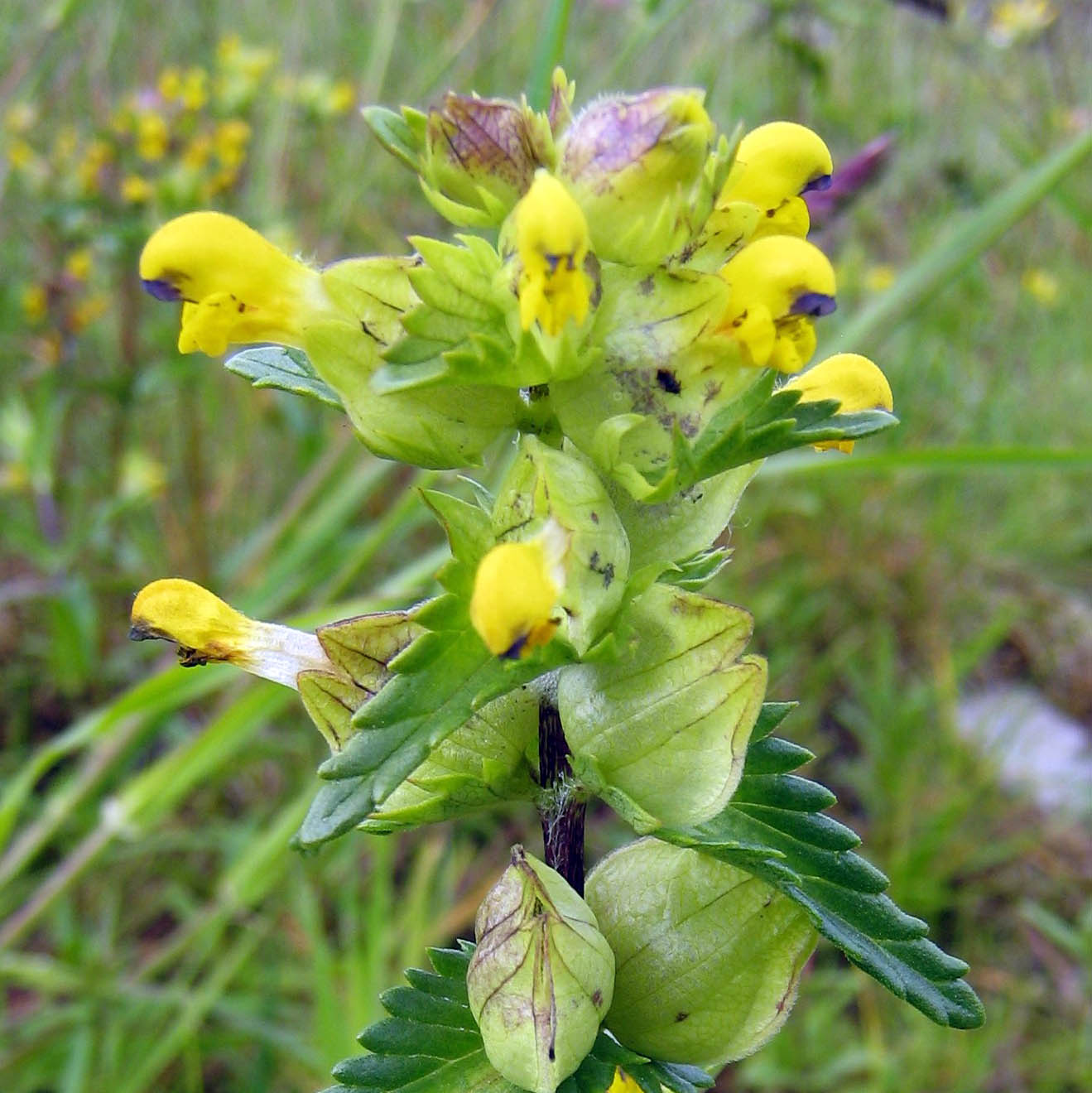
Yellow Rattle
Info Box:
Fertilisers promote grass and weed growth.
Do not use them on a site where you want wildflowers to grow!
Bear in mind that your site may be experiencing fertiliser run off from adjacent areas.
Type 1: Annual mixes
Annual seed mixes are comprised of annual species that complete their life cycle in one year. That is – they grow, flower and set seed in this time.
There is a common misconception that annuals will keep coming back year after year, but this is not the case.
Annual mixes only last for one season; seed must be purchased and re-sown each year if you want your meadow to continue to flower.
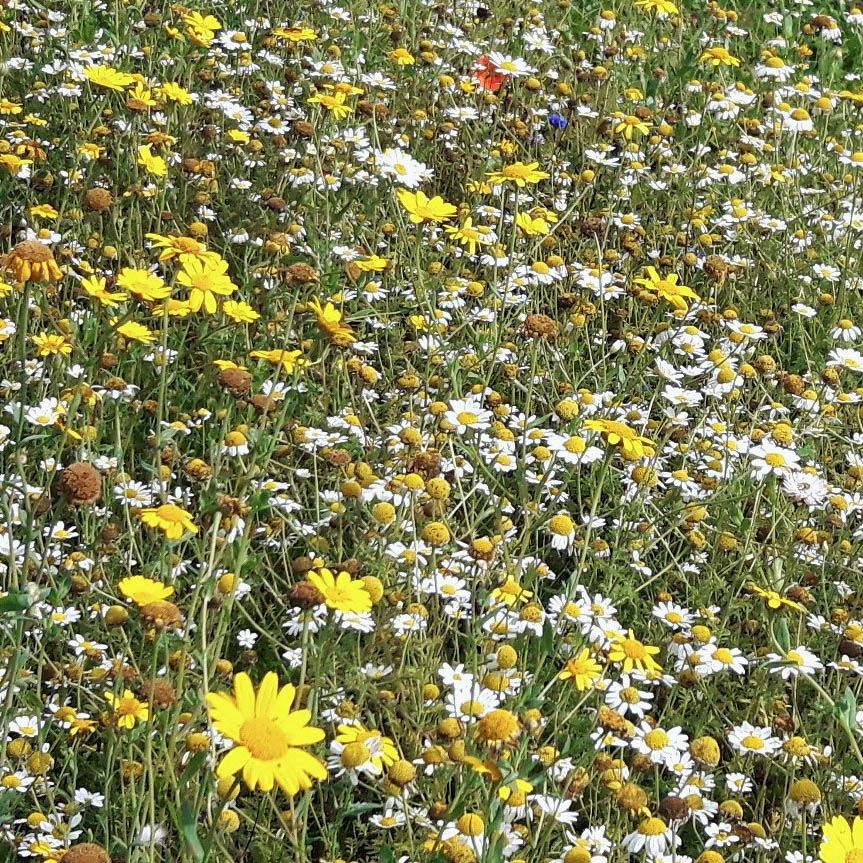
EcoSeeds One Year Hi-Colour mix
| Advantages | Annual mixes are typically more colourful and striking than perennial mixes |
| Disadvantages | Annuals are not as economical as perennials because seed has to be purchased and re-sown each year. They also aren’t as sustainable because the habitat only lasts for one year. While certain annual species are good, as a mix they provide less pollen and nectar for pollinators than perennials. |
| Sowing | Annual mixes can be planted in spring and autumn. Autumn-sown mixes tend to get more poppies as they are helped to germinate by the winter frost. Spring-sown mixes tend to favour Corn marigold so yellow is the dominant colour. |
| Overall lifespan | One year |
| Recommended for | Areas where you want an immediate impact |
| Management requirements | If you want annuals to come back each year, the meadow will have to be cut and the ground will need to be disturbed (rotovated) at the end of the season. Annual species are then re- sown each year. When to cut the meadow: When flowering has finished Cutting height: Ground level What to do with cuttings: Remove all cut vegetation immediately |
Info Box:
Remember, planting a wildflower meadow will mostly provide food for pollinators in the summer time.
Making sure flowers are blooming in spring still critical.
To ensure pollinators have food before your meadow blooms, plant early speciae such as Red Campion, Primrose, etc.
Type 2: Perennial mixes
Perennial mixtures are comprised of plants that will flower each year if managed correctly. These mixes usually do not flower in the first year and in the second year the dominant species will tend to be Ox eye Daisies. These short lived perennials tend to dominate until the meadow settles down. Some of the perennials such those in the Scabious family may take several years to establish.
All types of wildflower meadows require management of some sort. This usually involves an annual cutting and removal of the clippings. Over the winter a perennial meadow won’t look like much, but if managed correctly, it will come into full bloom once the weather gets warmer.
Even though they are not as colourful as annuals, perennial mixes tend to be much better sources of pollen and nectar for pollinators.
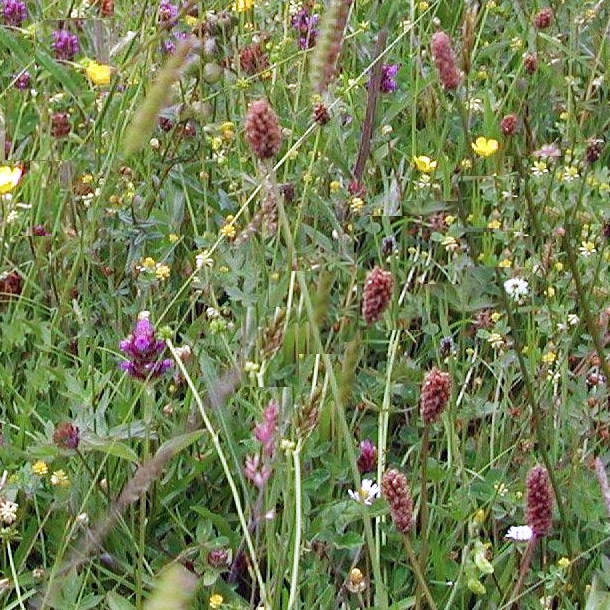
EcoSeeds Ecological Mix, close up

EcoSeeds Ecological Mix
| Advantages | Perennial mixes are more sustainable and economical than annuals. If managed properly, a perennial mixture will not need re-sowing. Perennial species also tend to be much better sources of pollen and nectar for pollinators. |
| Disadvantages | Perennial meadows take longer to establish. Perennial seed mixes are not as colourful as annuals. It is therefore a good idea to manage expectations if sowing a perennial as opposed to an annual mixture. |
| Sowing | These mixes can be sown in spring and autumn. An autumn sowing will help species that need frost action to germinate. |
| Overall lifespan | With proper management these mixes should not need re-sowing |
| Recommended for | If you want to sow a meadow and have land you can set aside EcoSeeds recommends trying to create a long term perennial wildflower meadow. |
| Management requirements | Proper management of a perennial wildflower mix varies from year to year. First year: In the first year it is important to keep the area cut short. This is firstly to keep “weeds” down but also to provide light to seedlings to help them grow. Cut the sward to a height of 75 mm whenever the vegetation reaches 150mm, and remove the cut vegetation if possible. Second and third years: After year one, the meadow is cut just once annually. The goal in years 2 and 3 is to encourage germination the following year. Cut the sward just once, after the seed has set (or no later than mid-November), to a height of 30 mm. Leave the cut vegetation for 3 days then remove. After cutting, perennial weeds should continue to be treated through mechanical removal or careful spot spraying.
|
Type 3: Annual and perennial mixes
The third type of seed mix is a mixture of annuals and perennials sown together. The annuals will not come back after the first year but will be replaced by perennial species.
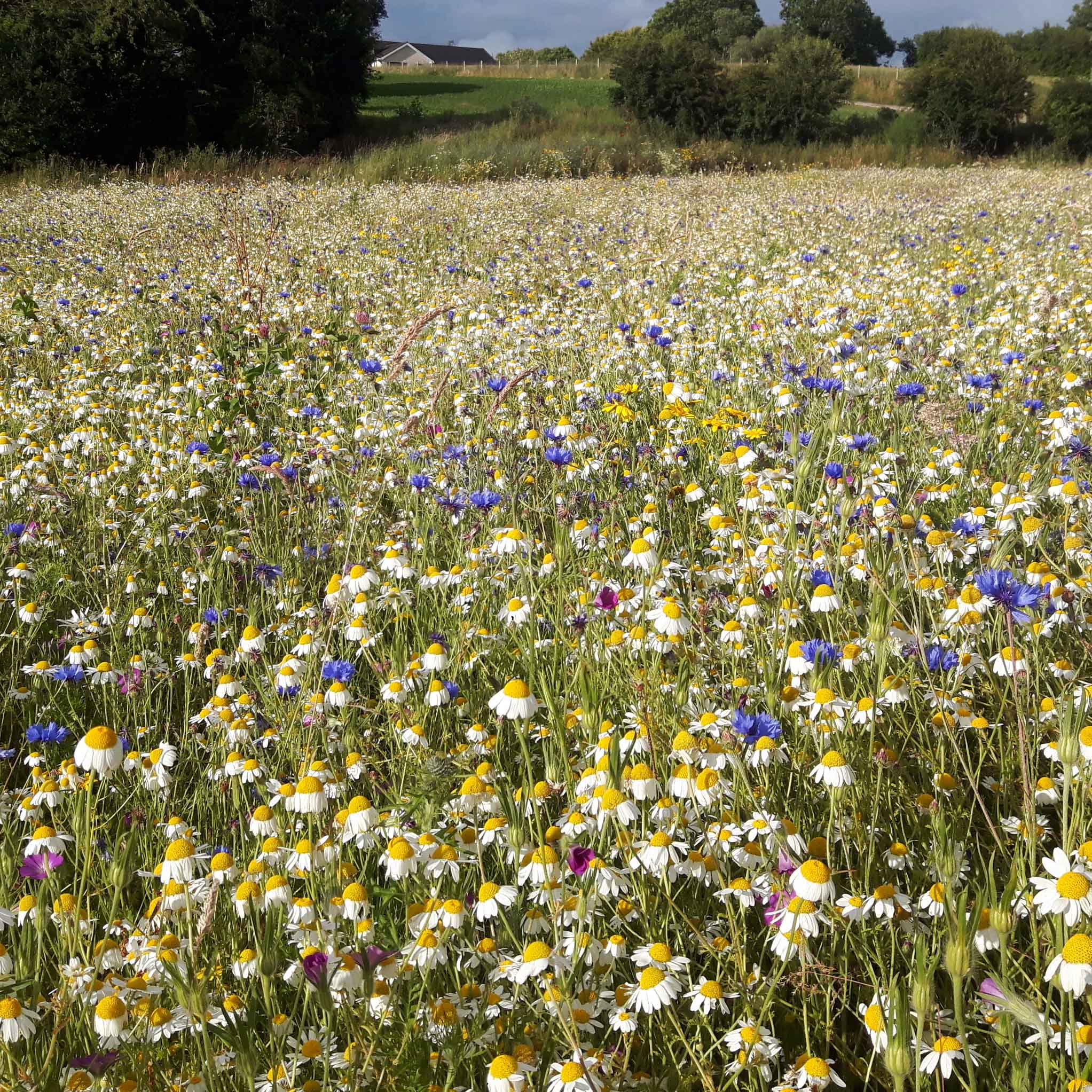
Hi colour Perennial and Annual mix, year 1
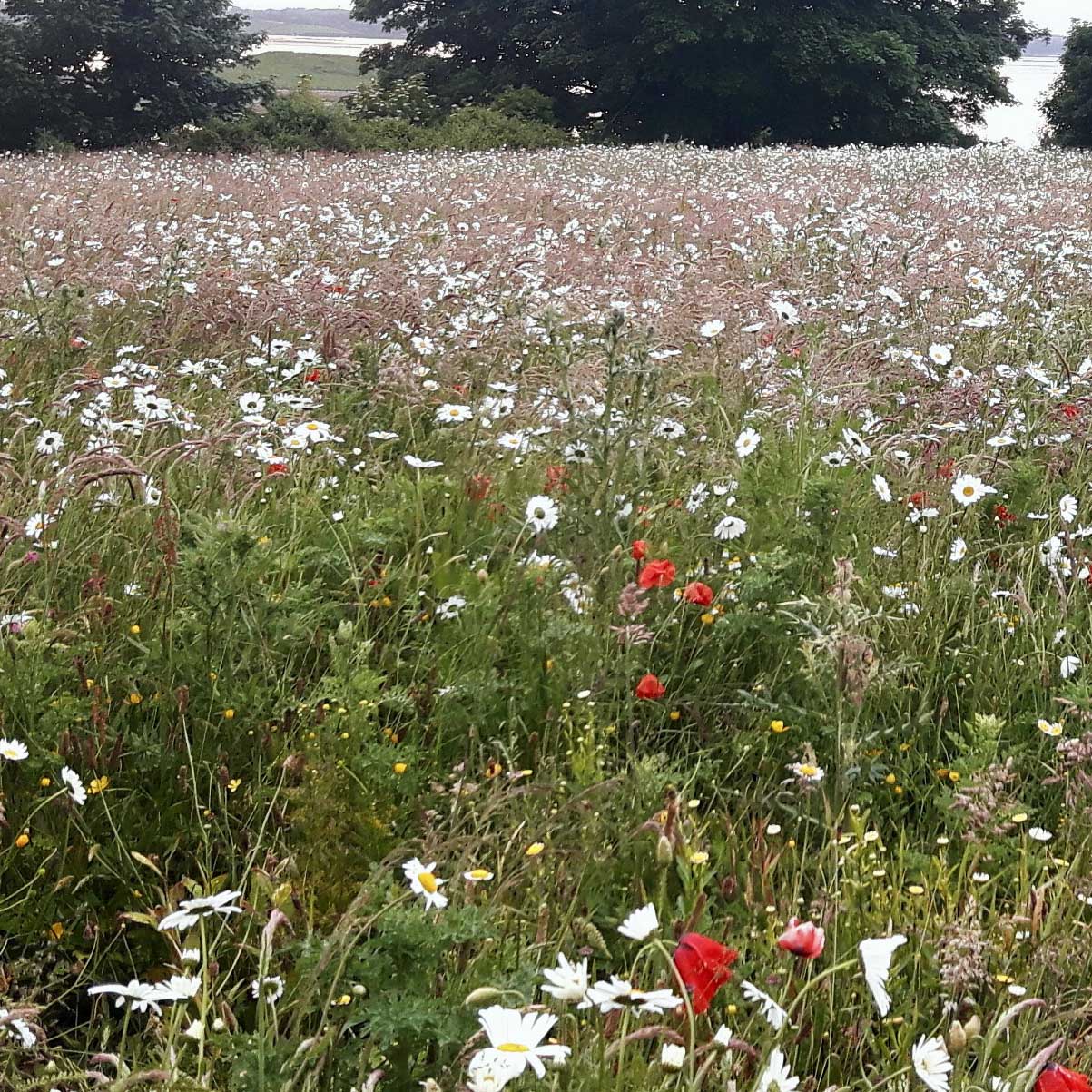
Hi colour Perennial and Annual mix, year 2
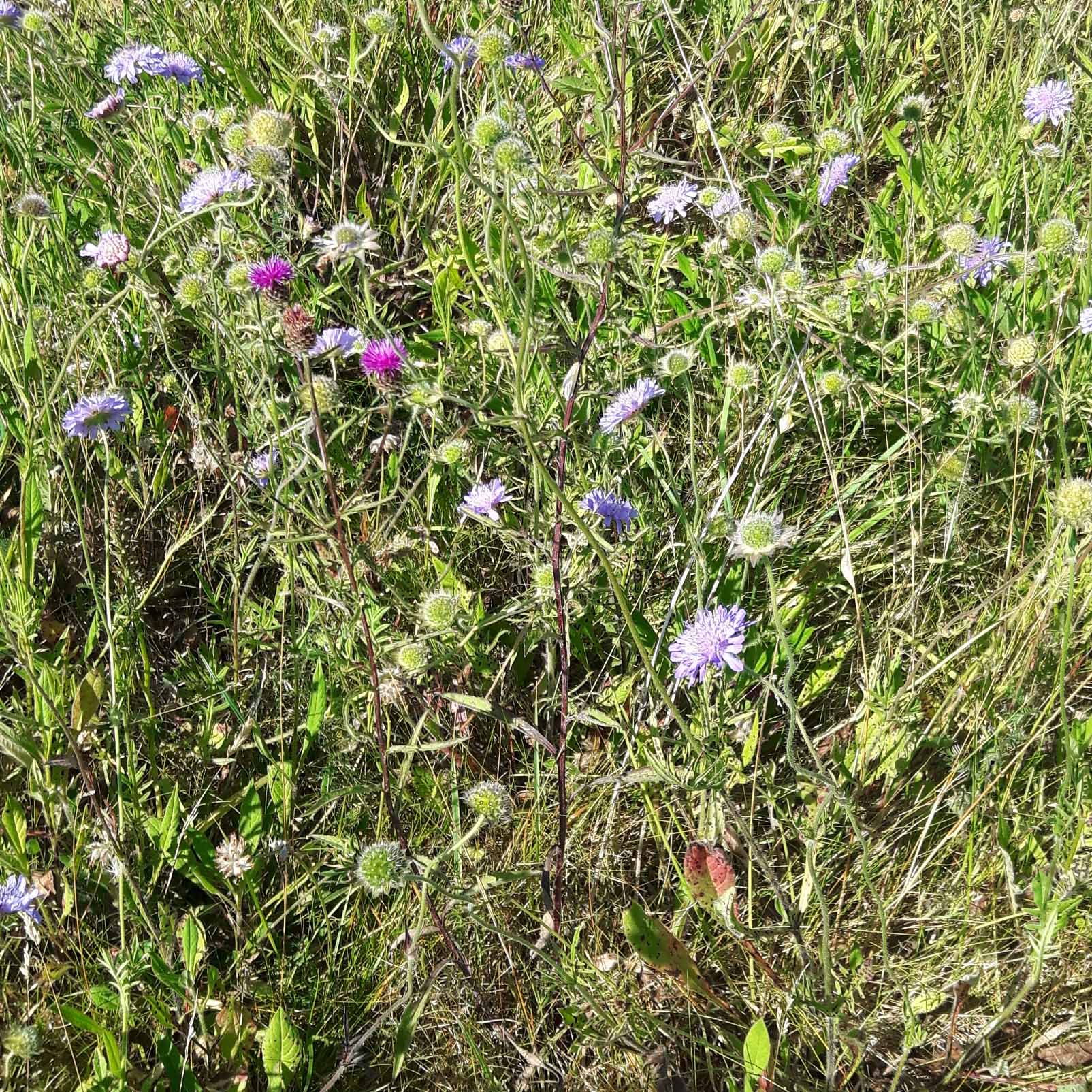
Hi colour Perennial and Annual mix, year 3
| Advantages | The annuals in the seed mix will provide the striking colour some people look for in a wildflower meadow in year one. The perennials will come back year upon year, extending the lifespan of the wildflower meadow and providing more pollen and nectar for pollinators than an annual seed mix. |
| Disadvantages | The meadow may be less colourful after year one, when the annuals have bloomed. |
| Sowing | These mixes can be sown in spring and autumn. |
| Overall lifespan | With proper management these mixes should not need re-sowing |
| Recommended for | If you want to sow a meadow and have land you can set aside, the All-Ireland Pollinator Plan recommends trying to create a long term perennial wildflower meadow. |
| Management requirements | Proper management of an annual and perennial wildflower mix varies from year to year. First year: After the first year’s flowers fade, cutting should be carried out (no later than mid- October). This provides light and helps the germination of slower growing perennial seedlings in the second year. Cut to a height of 30 mm, and remove all cut vegetation immediately. After cutting, treat perennial weeds (mechanically remove or carefully spot spray). Second and third years: In the second and third year, cut when seed has set (no later than mid- November) to a height of 30 mm. This time, leave cut vegetation for 3 days, then remove. Continue to treat for perennial weeds after cutting each year. Fourth year: Cutting is exactly the same in the fourth year (cut to a height of 30 mm no later than mid-November, leave for 3 days then remove vegetation). At the end of year 4 there are several possible options: Option 1 – The area can be left to settle into its own natural state and cutting/maintenance continued in the same fashion Option 2 – Yellow Rattle can be added to help reduce grass dominance Option 3 – The area can be enhanced with plug plants of other wildflowers See EcoSeeds website for more information on Yellow Rattle. |
12 important native Irish wildflowers for pollinators
These 12 perennial, pollinator friendly wildflower species are commonly found in native Irish commercial seed mixes.
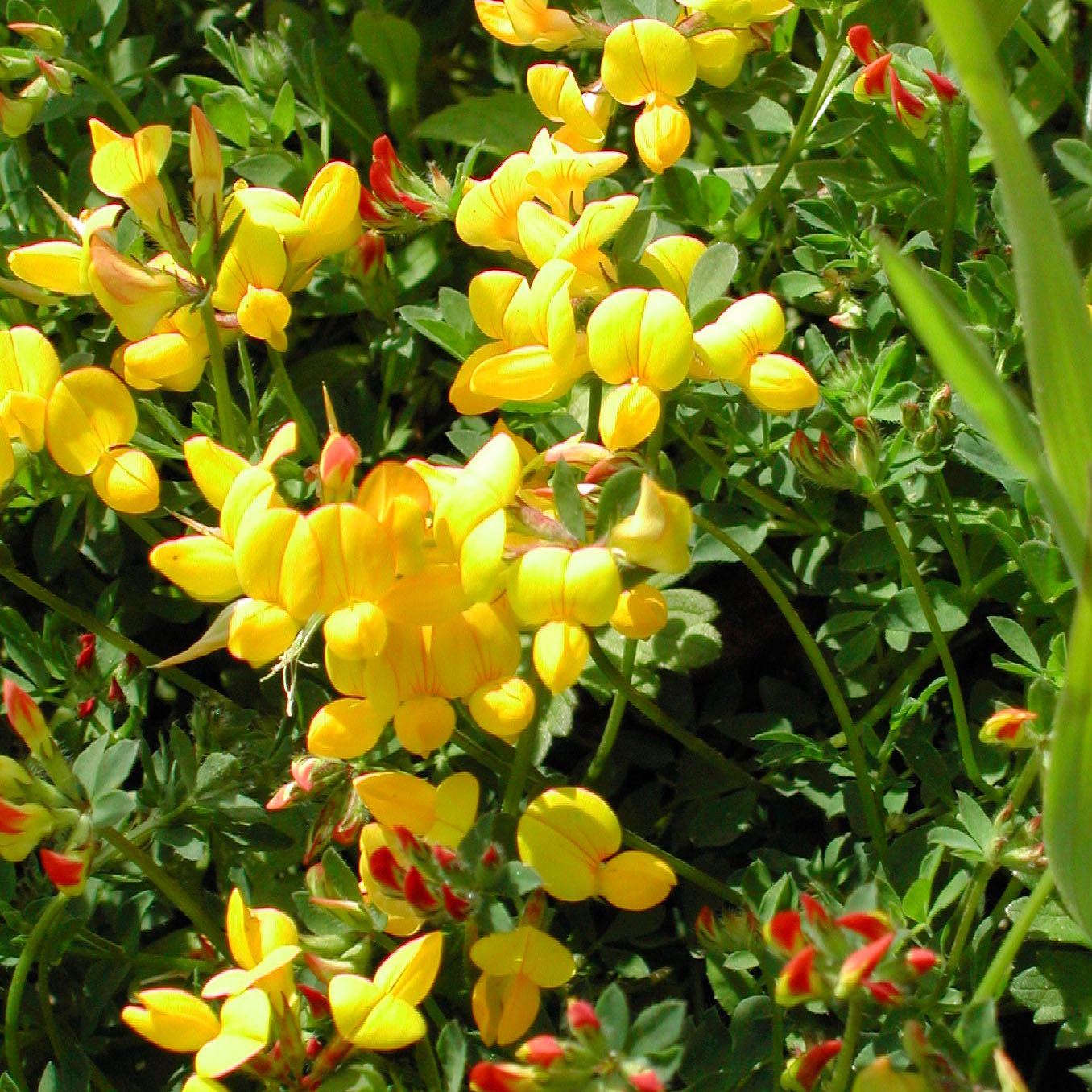
Bird’s-foot- trefoil
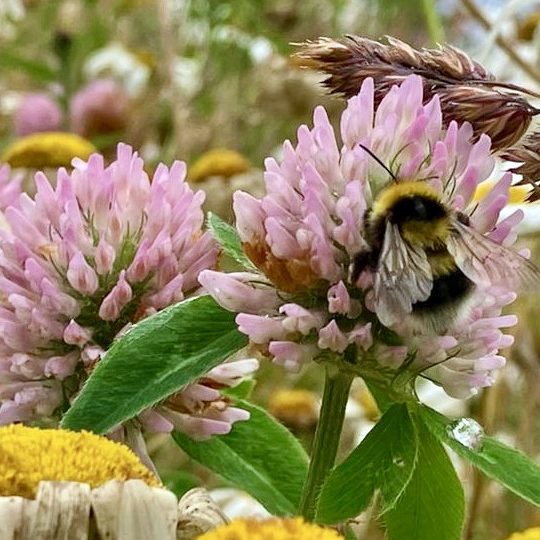
Red Clover
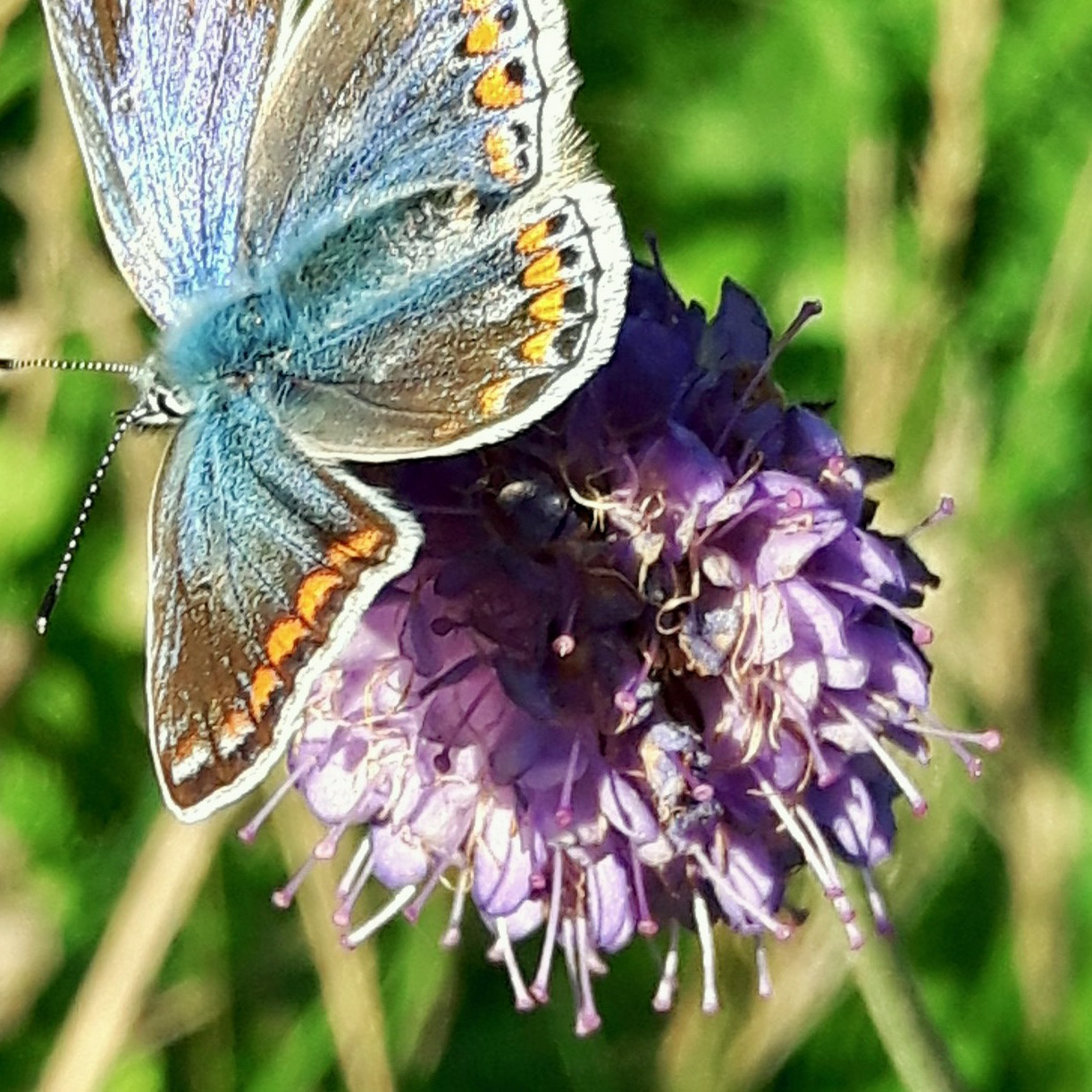
Devil’s- Bit Scabious
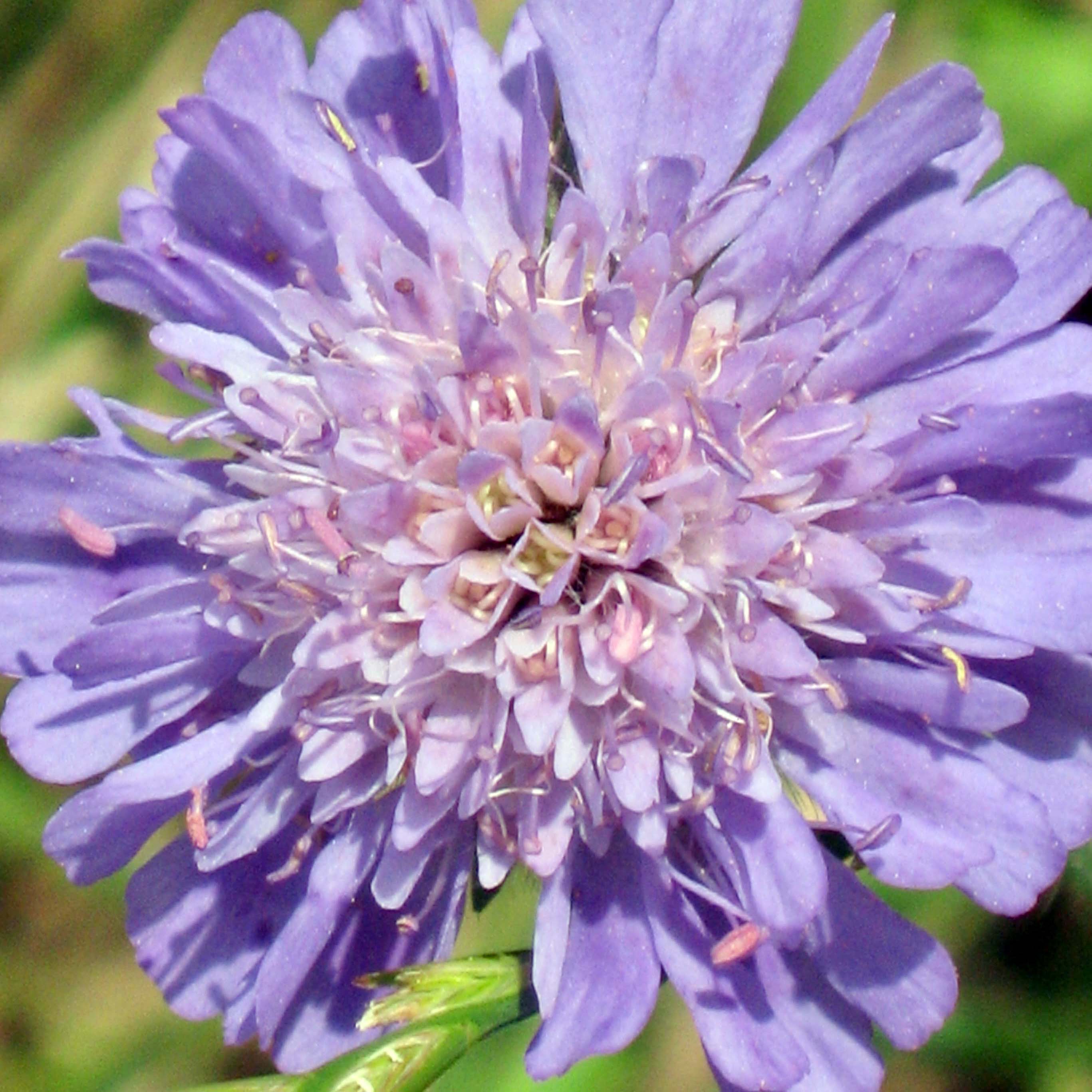
Field Scabious
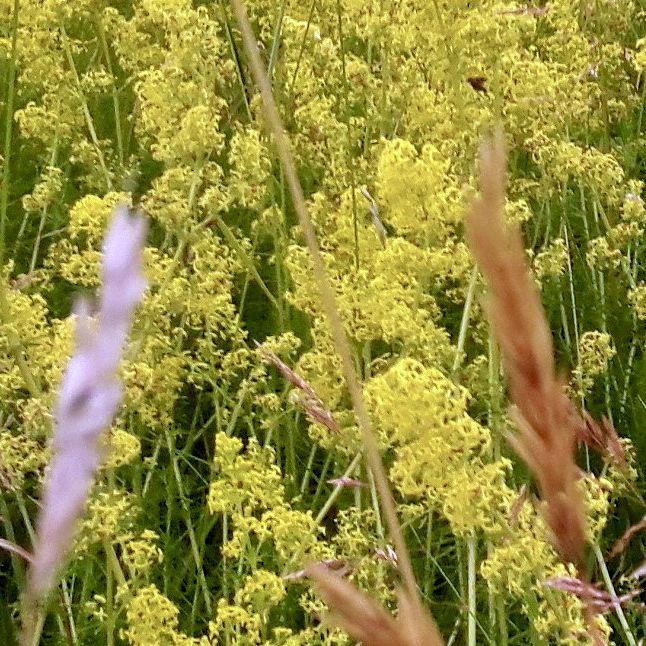
Lady’s Bedstraw
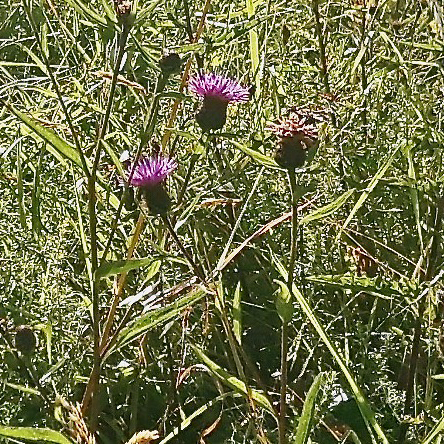
Knapweed
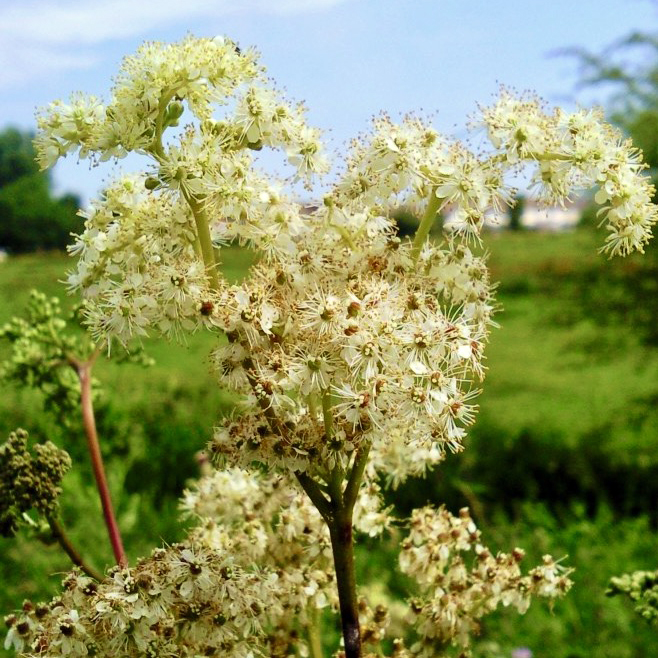
Meadowsweet
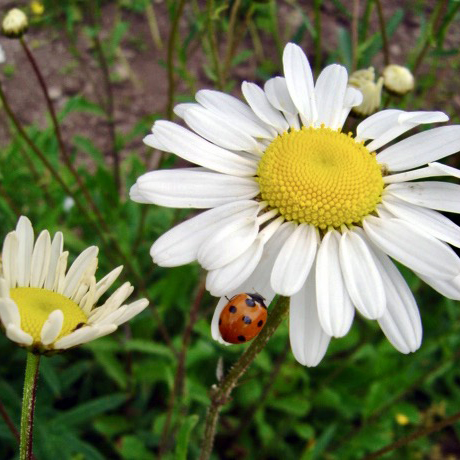
Oxeye Daisy
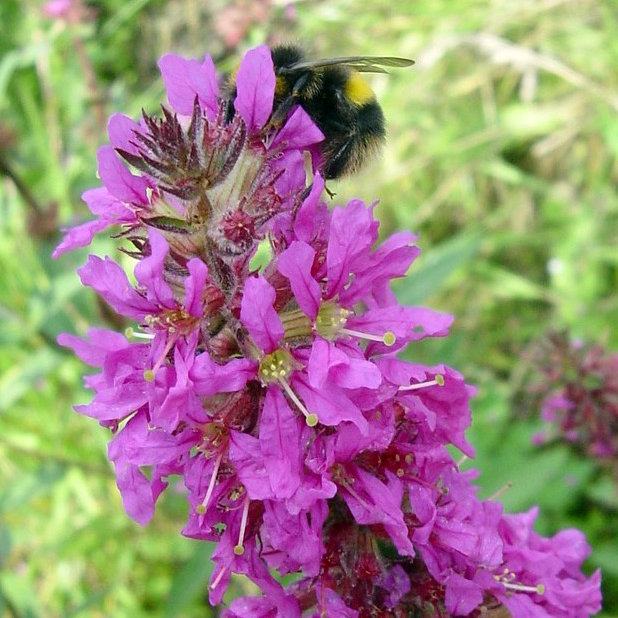
Purple Loosestrife
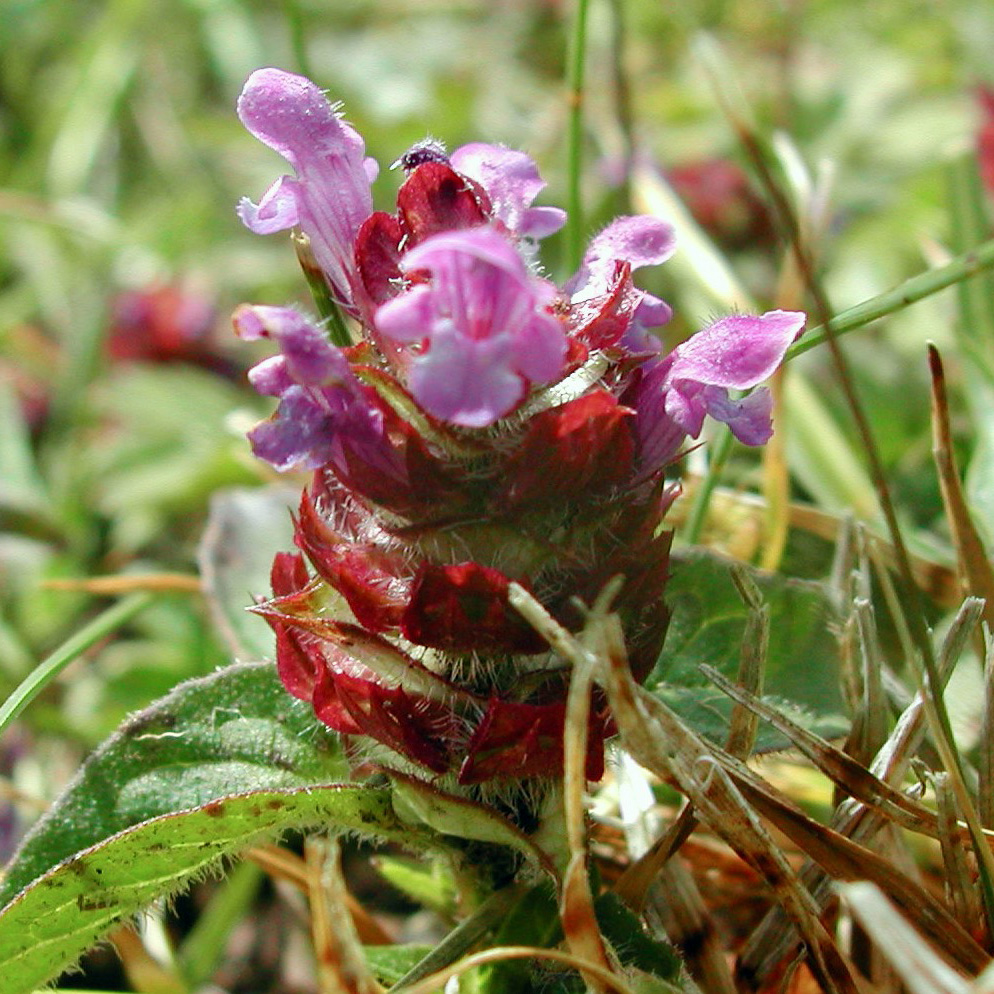
Selfheal
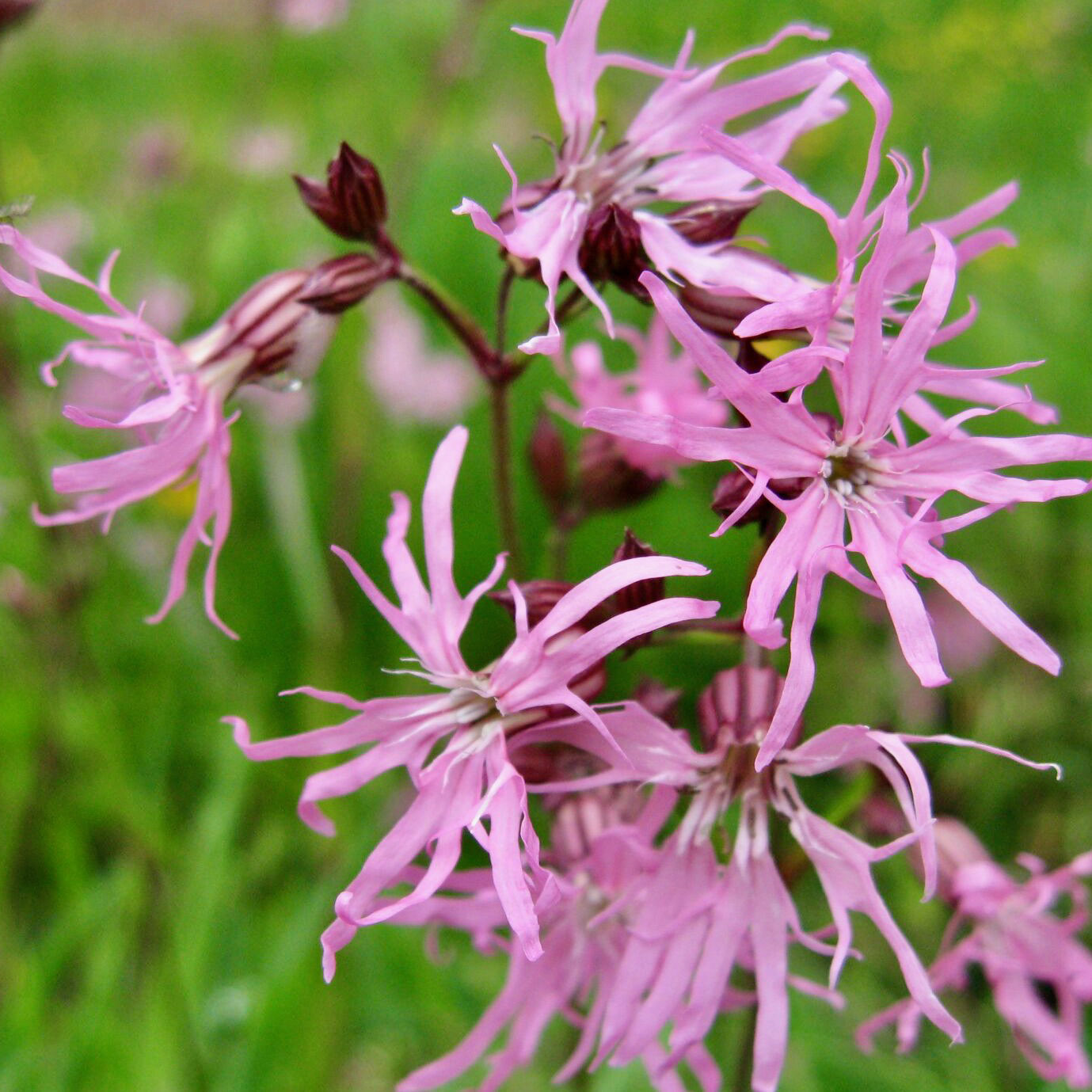
Ragged Robin
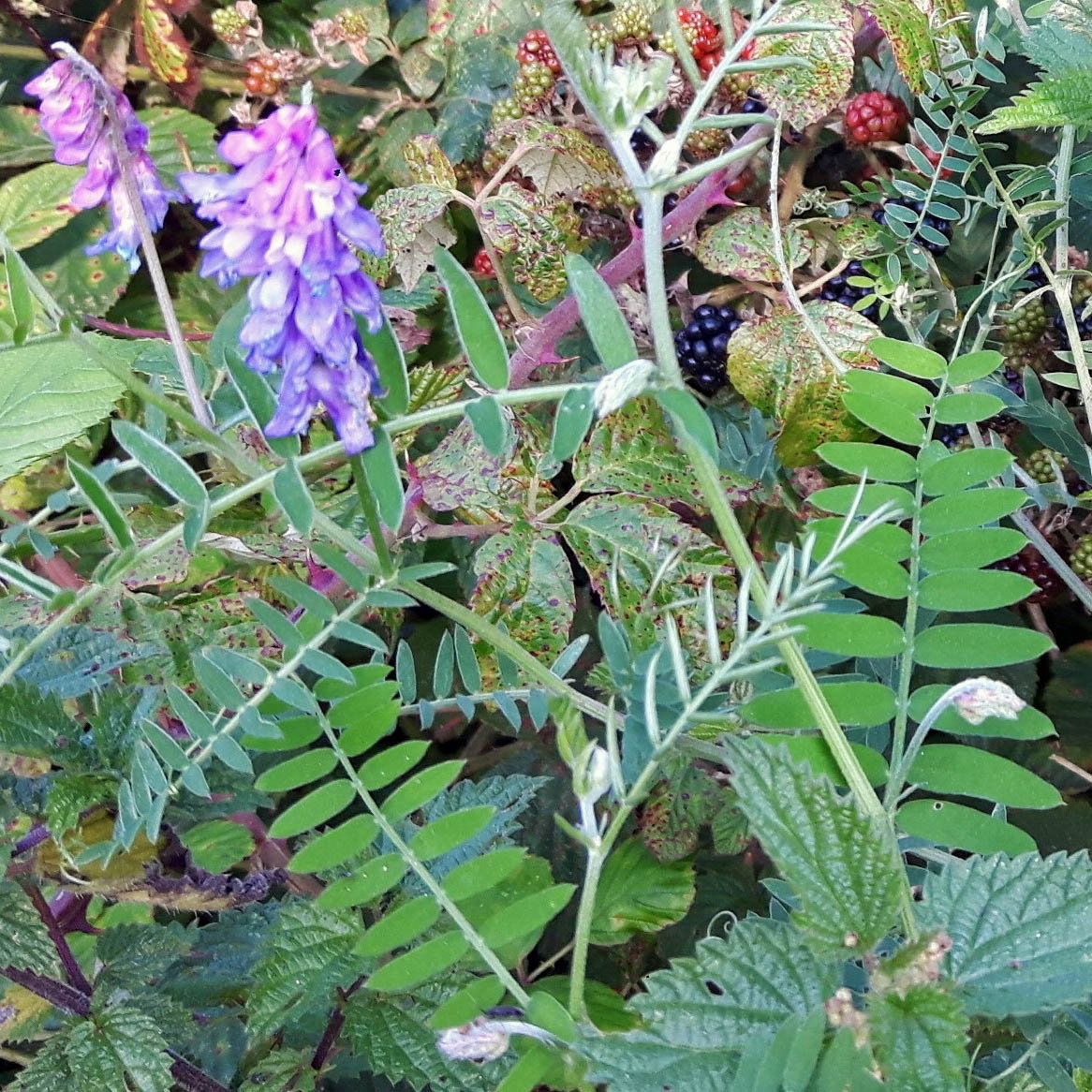
Vetches
Implementation:
The practical steps for creating your wildflower meadow
Once you’ve decided on a site and chosen the best type of seed mix, it’s time to create your wildflower meadow. There are a few different steps, and all the details can be found below.
Please note: for large areas (i.e. greater than 1000sqm), we strongly recommend contacting EcoSeeds for professional advice
A. Ground preparation and weed elimination
It is vital to prepare a proper seed bed before sowing wildflowers. This can be completed using organic or non-organic methods.
Although many people leave this step until the last minute, ground preparation should be done as early as possible (March/April for spring sowing and July/August for Autumn sowing). However beware of doing damage to the soil if the site is too wet.
Organic Method:
De-Turfing (do not use this method if the site is generally waterlogged and make sure you have properly risk assessed the work when working in groups)
- Cut existing vegetation to ground level (as low as possible) using a strimmer or lawnmower
- Remove turves by hand (with appropriate health and safety) or using a turf-stripping machine
- Fork over or rotovate area to loosen soil to a depth of 10cm and then rake to achieve a fine tilth
- Use a hand rake to break up the soil particles and open up the soil so it will accept seed. Remove stones greater than 5cm to create fine tilth
- Sow the seed mixture immediately afterwards as detailed below
Non-Organic Method
- Cut existing vegetation to ground level (as low as possible) using a strimmer or lawnmower
- Spray area using a suitable herbicide. Always follow the manufacturers instructions
- Wait 3-4 weeks, then rotovate or fork to a depth of 10 cm. Remove stones greater than 5 cm
- Wait 3-4 weeks or when there is re growth, then re-spray all growth with suitable herbicide
- Wait until herbicide has worked then prepare the seed bed by very lightly raking to achieve a fine tilth (but not deep enough to bring more seed to the surface)
- Sow immediately afterwards as detailed below
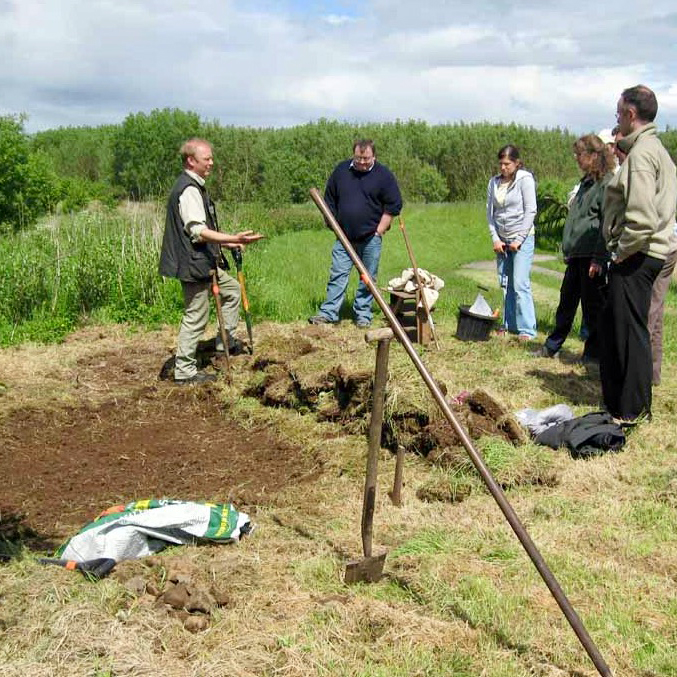
Turf removal
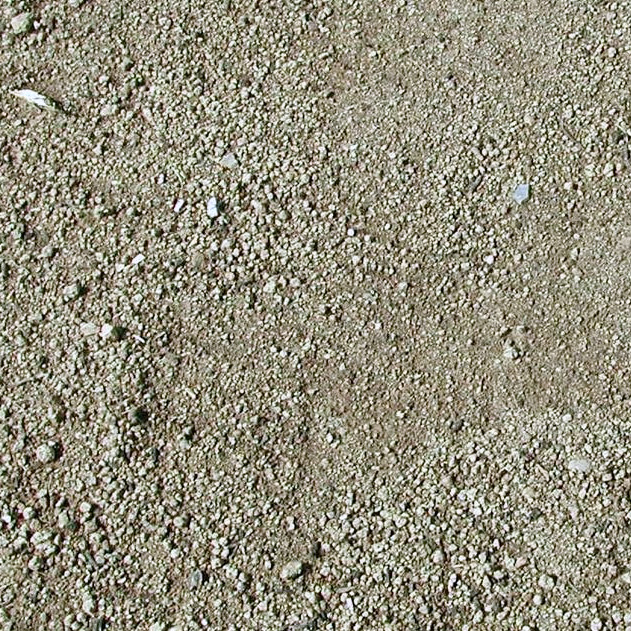
Fine Tilth
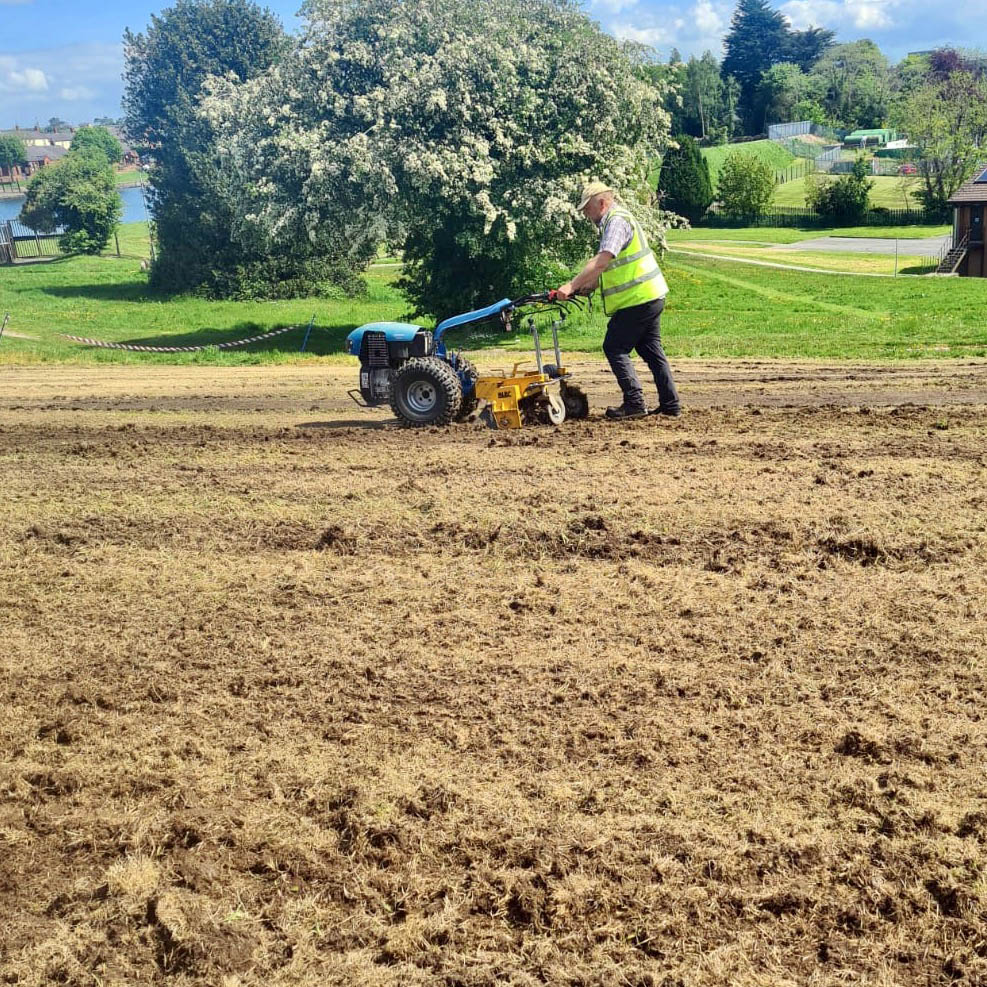
Rotovation



